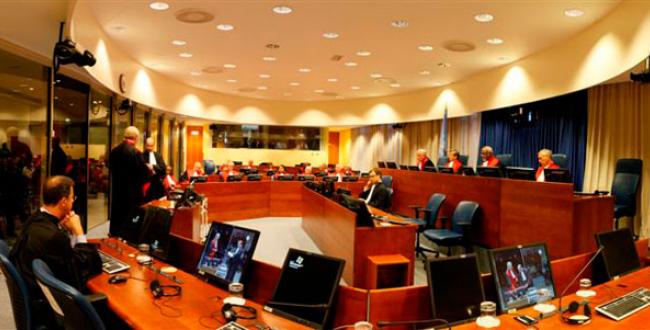 In the last ten years (2006-2015), 827 journalists, media workers and social media producers have been killed worldwide, according to the latest UNESCO Director-General’s report on The Safety of Journalists and the Danger of Impunity. Many more have been kidnapped, disappeared, imprisoned or threatened. There are numerous ways to address attacks on journalists.
In the last ten years (2006-2015), 827 journalists, media workers and social media producers have been killed worldwide, according to the latest UNESCO Director-General’s report on The Safety of Journalists and the Danger of Impunity. Many more have been kidnapped, disappeared, imprisoned or threatened. There are numerous ways to address attacks on journalists.
The behaviour of national governments is critical: they bear the responsibility for bringing the killers of journalists to justice and for putting in place effective measures to protect them. Many civil society groups and professional associations speak out for the right to freedom of expression and work for stronger legal and physical protections. Among international organizations there are also some initiatives that raise awareness about the threats to journalistic freedom and coordinate efforts to counter those threats. The workings of these bodies are often not well understood or even known by those most directly concerned: news media houses and journalists. One of the sources of meaningful policy work to make journalists safer is UNESCO. Among its initiatives is the UNESCO’s International Programme for the Development of Communication (IPDC). Its biennial strategic meeting took place last November.
What was new?
Since 2008, when the IPDC decided to establish journalists’ safety as one of its priorities, its Intergovernmental Council – the policy-making body composed of 39 UNESCO member states – has passed, every two years, a new Decision on the Safety of Journalists and the Issue of Impunity. It has requested the Director General of UNESCO to take specific actions, such as to prepare a biennial report on the killing of journalists. In 2010 it sparked the first ever UN-wide strategy on the safety of journalists, the UN Plan of Action on The Safety of Journalists and the Issue of Impunity. The Decision approved last November included some proposals that could reinforce the IPDC monitoring role in important ways.
As a result of this Decision, the next UNESCO Director-General’s report, to be released in 2018, will:
- Include not only data on the killing of journalists and their judicial inquiries, but also on actions taken by UNESCO’s Member States to promote the safety of journalists and to combat impunity “as a way to share good practices”. This was already requested in previous decisions, but never acted on. This time, it has been emphasized.
- Pay more attention to data disaggregation to highlight the particular risks faced by women journalists.
- Improve the collection of data on killings and judicial processes, to be presented as part of the UN’s monitoring process of the Sustainable Development Goal (SDG) 16.10. This is important, as the UNESCO DG’s report could become a highly relevant source of information to measure the indicator 16.10.2, which refers to: “number of verified cases of killing, kidnapping, enforced disappearance, arbitrary detention and torture of journalists, associated media personnel, trade unionists and human rights advocates in the previous 12 months”. UNESCO’s report would, however, only include data on killings; it does not provide information on other types of violence against journalists mentioned in the indicator. This would need to be requested by the IPDC Intergovernmental Council and it does not seem to be an issue around which consensus could easily be achieved, even though in 1997 UNESCO already gave the authority to the Director General of UNESCO to condemn physical acts of violence against journalists, and not only to condemn killings, as it does now. One might argue, too, that it would be a difficult task to accurately and systematically collect that additional information at this moment.
Apart from its monitoring role, the IPDC, created in 1980, aims to promote free, independent and pluralistic media worldwide. Eight years ago, when the first UNESCO Director-General’s report was presented, a new priority was added: to promote journalists’ safety and fight against impunity on crimes against them.
How has the priority on journalists’ safety and the fight against impunity been implemented?[1]
- First, by enabling standard-setting tools; for example, the IPDC Council is behind the development of theUN Plan of Action on the Safety of Journalists and the Issue of Impunity, whose implementation is now led by UNESCO. Approved in 2012, it was later backed by landmark resolutions on the safety of journalists and the issue of impunity that were approved by the UN General Assembly (UNGA), the Human Rights Council (HRC) and the UN Security Council (UNSC). The Plan is a useful tool to monitor and promote the compliance of governments with their commitments. It is a multi-stakeholder initiative that calls for active involvement by States themselves, as well as the relevant UN agencies and bodies, regional organizations, and civil society and media organizations. Much has already been achieved. Yet UNESCO’s own record of the numbers of journalists killed tells its own story: journalism remains a potentially deadly kind of work in too many countries. Stronger commitment is still required from various UN bodies, such as the United Nations Development Programme (UNDP) and the UN Office on Drugs and Crime (UNODC) –at one time very much involved-. Better coordination is also called for, not only within the UN, but with other actors, such as civil society, media industry and States, to implement the UN plan more effectively.
- Second, by developing assessments and diagnostic tools; for example, creating theJournalists’ Safety Indicators to map potential dangers for journalists in a given country and identify the necessary actions to be taken. These indicators could be used in many cases as a good first step to implement the UN Plan at a national level.
- Third, by funding projects worldwide; since 2008, more than one million (USD) have been allocated to projects dedicated to, among others things, the training of journalists, sensitizing public opinion, advocating for the role of public institutions and developing national evaluations and strategies for the protection of journalists. An evaluation is now under way within the IPDC to determine how to use these funds more efficiently in coordination with other initiatives that UNESCO is undertaking on the issues of safety and impunity. A more developed strategy might soon see the light of day.
- And fourth, by creating reporting and monitoring mechanisms to combat impunity; for example, theUNESCO Director-General’s Report on The Safety of Journalists and the Danger of Impunity. Every two years, the Director-General of UNESCO presents a report on the killing of journalists, whose quality has been improving edition by edition. It is not the only existing source of information on this issue. A number of NGOs have been providing systematic and reliable data on attacks against journalists for many years. What makes this report unique is the information it contains on the judicial inquiries that follow the killing of journalists. This information, when provided by state authorities, is a crucial starting point in addressing impunity. Still, States are asked to provide this information only on a voluntary basis. Some voices have been raised down the years calling for it to be made mandatory, but this has yet to happen. Nonetheless, the number of responses has been increasing, thanks largely to civil society organizations pressing for this to happen, such as IFEX network and its members. The responses provided by States about the judicial inquiries are also published on the UNESCO website, if the countries concerned agree; even here, the number has also been increasing, but there is still more work to do to make the process more comprehensive and transparent. A starting point could be to make the responses easily accessible, perhaps on a resource webpage.
The IPDC’s will continue to be relevant, as part of the effort led by UNESCO to promote the safety of journalists and to fight impunity. Civil society also has an essential role. In fact, it is only through a coordinated engagement among civil society organizations at the local and national level, in cooperation with the international organizations who are at the forefront on these issues, that more accountability can be achieved; and with that accountability comes the slow and steady enlargement of the space for freedom of expression and freedom of the press.
The media cannot sit on the sidelines, waiting for civil society to act, as is sometimes the case today. Media enterprises, large and small, must increase their reporting on the attacks against journalists and on these international efforts, including those at UNESCO and other UN bodies that promote the safety of journalists and the fight against impunity. The media must inform their communities of the actions taken by their national governments in these fora so that the people can decide if their actions are true to their obligations and commitments in this field. Anything less would be to leave open the way for a worsening situation for all, including those who provide information and those who consume it. Freedom of expression means the right to impart information and also to receive it, to enable people everywhere to make informed choice about the future they wish for themselves and future generations.
Silvia Chocarro Marcesse is Senior Consultant on Freedom of Expression.



